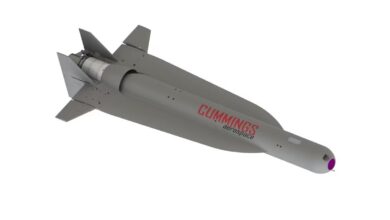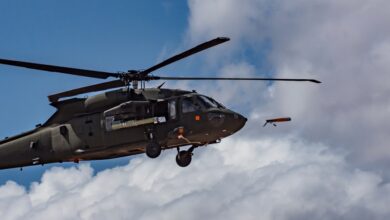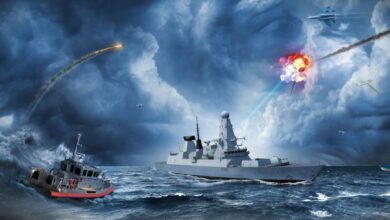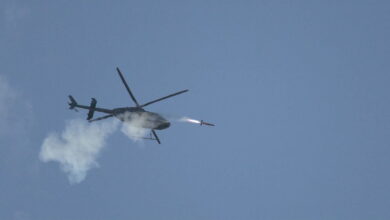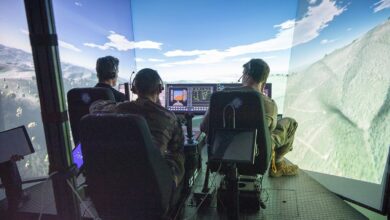The UK Royal Navy has deployed its P2000 Archer-class patrol boats in the Baltics to demonstrate autonomous mine-hunting operations.
The first-time drill is part of NATO’s annual exercise to affirm its members’ interoperability in protecting the region.
During the exercise, the British Coastal Forces Squadron sailed the fourth and seventh Archer ships, HMS Pursuer (P273) and HMS Puncher (P291), to the Gulf of Riga in Latvia to test their expeditionary mine hunting kits for overseas missions.
The vessels were assisted by the Scotland-based Mine and Threat Exploitation Group and their IVER 3 autonomous underwater drone, which projected a live feed of the seabed as it scanned for potential mines.
The countermeasure trials concluded with the team surveying 620,000 square meters (6,673,624 square feet) of an area that was heavily planted with explosives in both World Wars.
The Royal Navy wrote that this “historic” field still has 80,000 mines and other unexploded remnants on the seabed.

“It is a great pleasure to be invited to take part in Baltops as it provides an excellent opportunity to share ideas and develop new ways of working with NATO allies,” Royal Navy Coastal Forces Squadron Cdr. Richard Skelton remarked.
“This year has had the added bonus of successfully deploying a minehunting capability from the platform and being able to clear a significant area of historic ordnance.”
As Red Team, Salvage Support
Meanwhile, the Royal Navy deployed additional Archer patrol vessels to the Stockholm Archipelago to assist in training the Swedish and Dutch navies in confined waters.
This separate NATO preparation saw the lead Archer ship (P264) HMS Ranger (P293) and the HMS Example (P165) take the role of a “red team” or simulated enemy crafts against the participants’ larger warships.
The fleet was also used in coordination with Lithuanian patrol vessels and a US aircraft to support an American Survival, Evasion, Resistance, and Escape team who practiced the extraction of downed aircrew.
“We are very happy with what we have achieved on Baltops this year, and it has sparked plenty of ideas for future iterations and how we continue to develop the utility and operational output of the P2000 as a platform,” HMS Archer Commanding Officer Lt. Jack Patterson stated.
“Our units continue to prove their versatility in a range of environments.”
UK’s Archer Patrol Boat
The British Archer patrol boat is the smallest of the Royal Navy fleet. Alongside active security, the ship is utilized for training applications across the service.
The vessel measures 20.8 meters (68.3 feet) long and has a beam of 5.8 meters (19 feet).
It is powered by a diesel engine for speeds up to 25 knots (46 kilometers/29 miles per hour) and a range of 550 nautical miles (633 miles/1,020 kilometers).
The system can carry more than 15 personnel and is armed with autocannons and machine guns.



